Background on the Development
Why Oppose Floodplain Development?
Here is a list of reasons why citizens are gravely concerned about this project, along with our timeline of action.
Secretive Floodway Change
Two years ago, the developer's engineer quietly and successfully petitioned FEMA to move the floodway line significantly toward the river. There seems to be no topographical basis for the change, and eyewitness accounts of floods refute it directly. The developer proposes a 15'-18' high retaining wall that is located on the new line, with 4-story apartment buildings directly on top of this new "floodplain" area that was until very recently accepted to be floodway. This would cause higher flooding levels upstream and higher-energy, more destructive flows downstream.
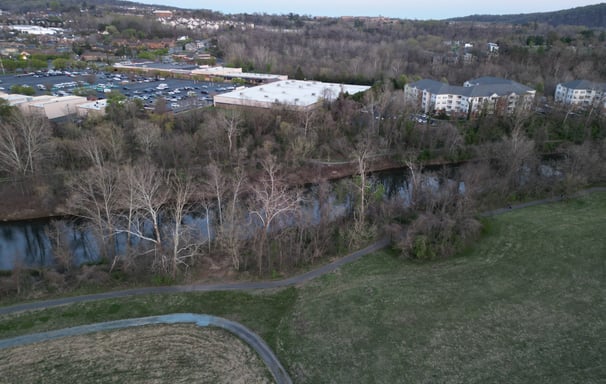

Destruction of Ecosystem Services
Charlottesville is losing its tree canopy quickly, and the City wants to change that. This project would eliminate acres of tree canopy. It will eliminate acres of wetland and stormwater-treating meadow and forest habitat. A development of this scale in this location will lead to hotter temperatures in the area and significantly lower water quality in the Rivanna, right upstream of some of the most popular local swimming spots for kids.
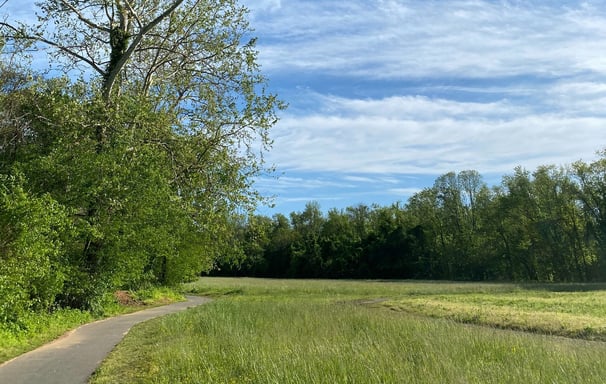

This is Not Affordable Housing
The developer refuses to include any affordable housing in this project. In fact, the project involves so much expensive geography-changing wall construction and site-filling that the very nature of this project is aimed at a high-rent product. We need affordable housing in Charlottesville, but this project does not meaningfully help get us there. Simply building more housing could help us with our affordable housing shortage, but a development of this scale built in this floodplain (very recently designated floodway) is short-sighted and inappropriate for many reasons.
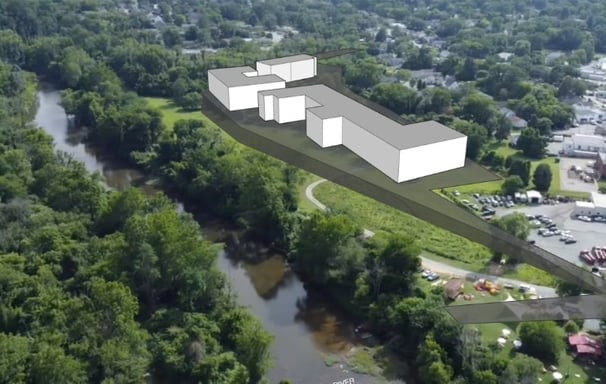

Traffic Hazards and Congestion
This development, which will include at least 318 spaces of surface parking, will dump more than 1,000 vehicle trips per day onto E High Street. This is an already congested and dangerous corridor that has been identified as a major problem area just handling the traffic load that it does today. No public infrastructure improvements on existing roads will be made to alleviate the additional problems and dangers caused by this project.
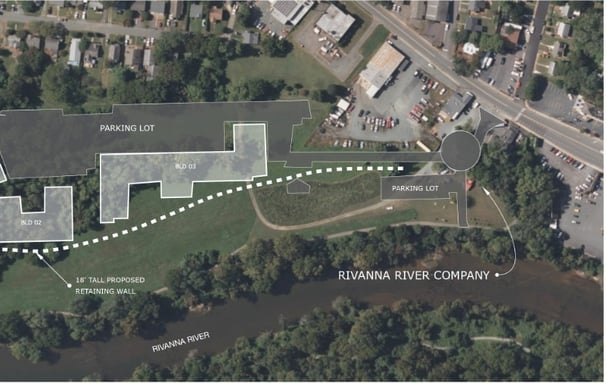

Destruction of the Rivanna River Company
While the developers claim to be allowing the Rivanna River Company to remain on-site, their recent proposals reveal that this may not in fact be the case. A parking lot is now proposed to be built overtop what is currently a beloved community event venue, stopping off point for users of the Rivanna Trail, and singular source for river connection and outfitting in Charlottesville.
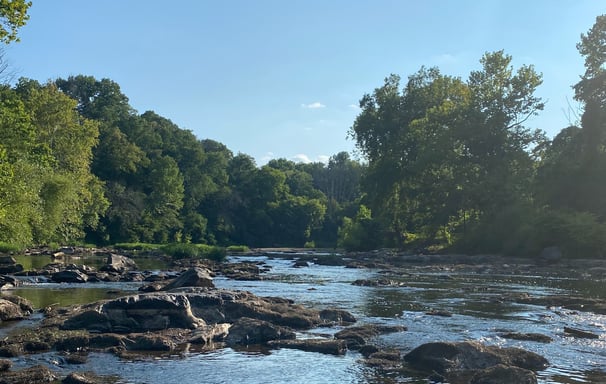

Importance of this Open, Natural Space to Citizens of Today and Tomorrow
As Charlottesville changes its zoning and becomes much more dense, it will become more like a big city. Large natural open spaces accessible to many by foot and bike will be more and more important for quality of life. This land already has a devoted following of people who love walking past and through it. The intense outpouring of opposition to this project speaks to the heartbreak so many in this town anticipate at seeing that massive wall built through this little piece of paradise. This land has a history of being a place of escape and diversion for the city dweller, and this is a history worth honoring and continuing in a modern way.
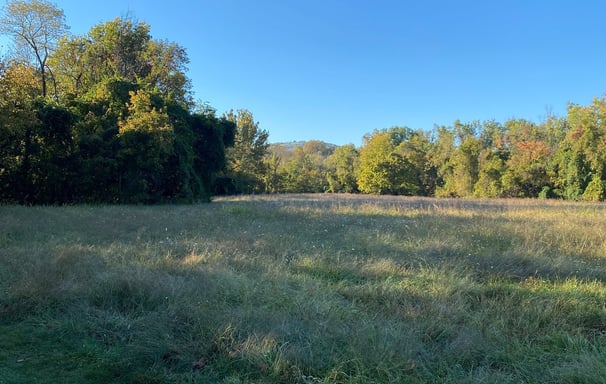

Timeline of Action
On September 26, 2022, Seven Development LLC submitted a preliminary site plan for the development of 0 East High Street, through its engineering firm, Shimp Engineering. The plan proposed development of a 345-unit multi-family housing complex on the floodplain of the Rivanna River, just downstream of the Free Bridge. The affected parcel is popularly known as the “Circus Grounds” and is formally identified as tax map parcel 500144000 in the City of Charlottesville, VA. It contains approximately 21.99 acres, and is split zoned among several zoning districts: B-1 Business, B-3 Business, R-1(S) Small Lot Residential, and CC Central City Corridor Mixed Use District. The Rivanna River Company operates on a northern portion of the parcel.
The property is owned by Hunter Woods, and his father, Wendell Woods, directly or through their entities, Southern Ventures, Inc. or Southern Vector, Inc. It apparently is the subject of a conditional sales contract to Seven Development LLC, controlled by Bo Carrington.
The City rejected this first preliminary site plan on October 26, 2022, and the developer submitted a second preliminary site plan on December 7, 2022, which also was rejected on January 20, 2023. The developer submitted a third preliminary site plan on February 17, 2023, which also was rejected on April 3, 2023. The developer submitted a fourth preliminary site plan on June 5, 2023, which also was rejected on July 14, 2023.
Under the federal FEMA floodplain determinations in existence prior to 2022, the project would not have been permissible because it would have encroached on the regulatory floodway, where development is not permitted. In 2021, however, Shimp Engineering, the engineering firm for the project, submitted a request to FEMA for a LOMR redrawing the floodway boundary just enough to permit the development. The data submitted in support of the LOMR has been challenged as incomplete, not including historical major flood events. FEMA rejected a petition for reconsideration filed on behalf of neighbors affected by the proposed project, as untimely.
The most recent preliminary site plan envisions stub streets, a cul-de-sac, and a parking lot not shown on the Comprehensive Plan for the City of Charlottesville and a huge amount of fill, which would affect upstream and downstream flooding. Both of the proposed access streets would be subject to flooding. The proposed parking lot encroaches on the regulatory floodway, where development is not permitted.
Under the Charlottesville Code, no significant development may occur until the City has approved a site plan. A final site plan may not be approved until all objections to preliminary site plans have been resolved.
Under Virginia state law and under the Charlottesville Code, no street, connection to a public street or other public facility may be constructed unless it is shown on the Comprehensive Plan for the city. None of the streets, access points, cul-de-sacs, or parking lots in the proposed development are shown on the Comprehensive Plan.
